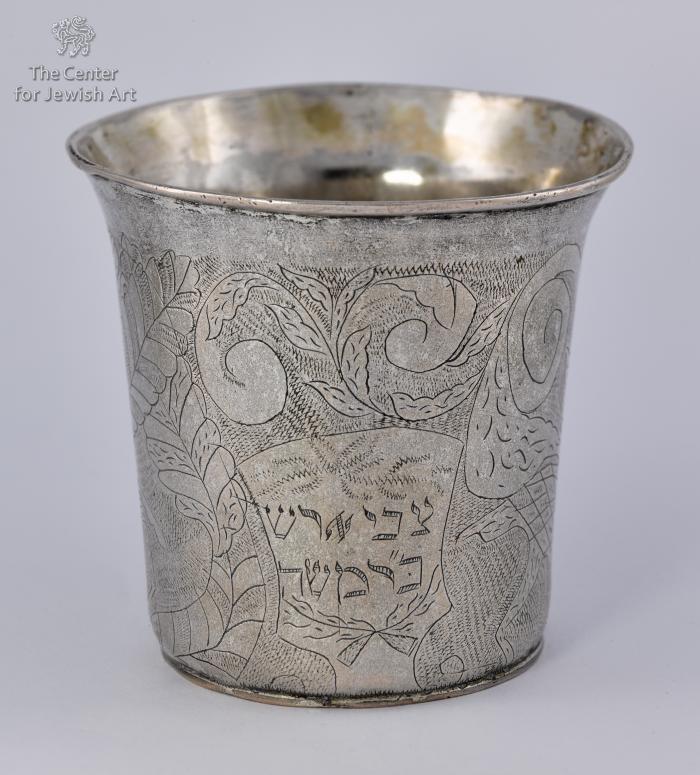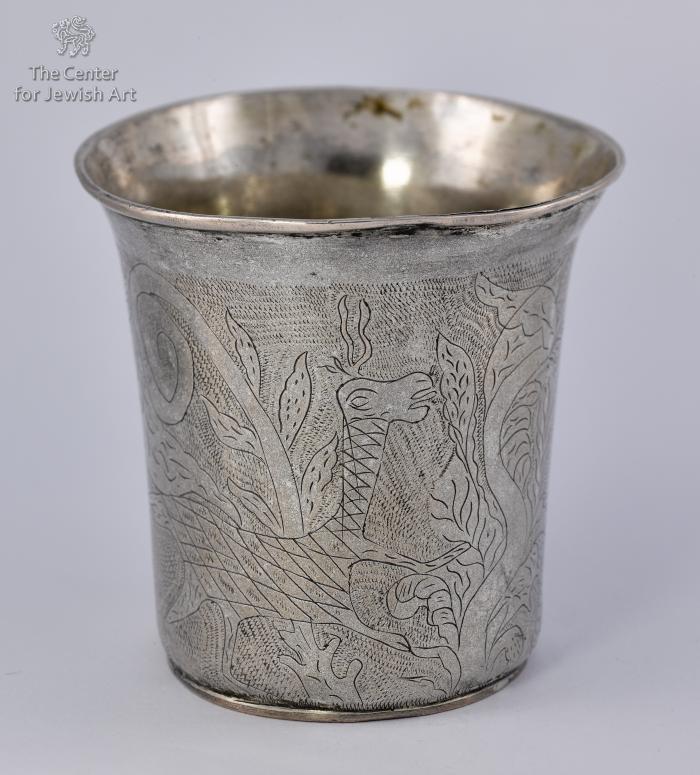Obj. ID: 35808 Kiddush cup, Poland, circa 1825

sub-set tree:
The following description was prepared by William Gross:
The sanctification of the Shabbat and Holidays is connected with a blessing recited over wine or grape juice. While the wine can be drunk from any vessel, often special cups are created for the purpose. In most cases, regular cups are simply decorated or inscribed with names or blessings, rendering them exclusively for the Kiddush.
While the cup is of typical form from the area of Poland/Ukraine, the decoration is an outstanding example of folkart. The naive floral decoration and in particular the two rampant deer of extraordinary folk representation make this cup quite unusual. The rendition of the name of the owner, Tzvi Hirsch bar Moshe, in an almost childish script and the presentation of the Hirsch as "Ersh", with a dropped "H", completes the outstanding example of Jewish object of folk art. On the bottom is the quality mark "12".
Inscription: Tzvi Ersh bar Moshe




